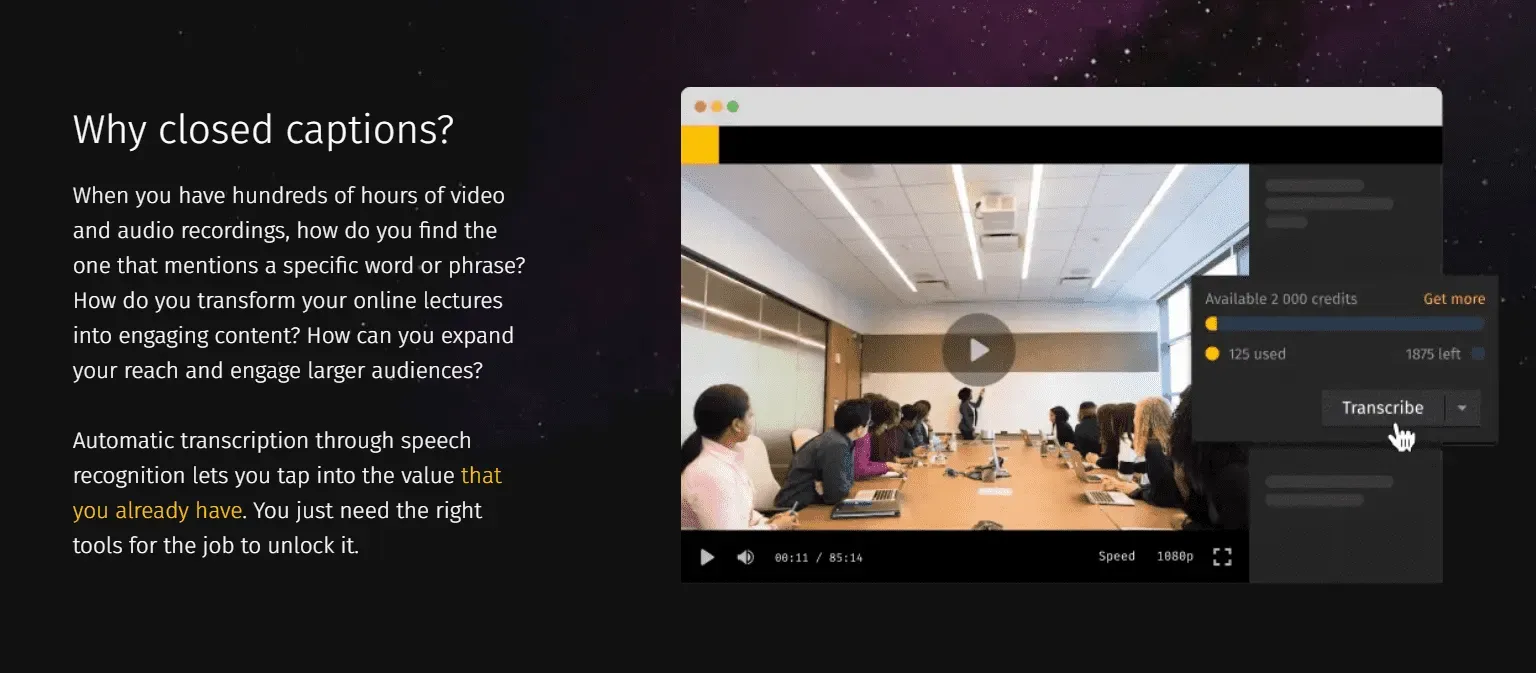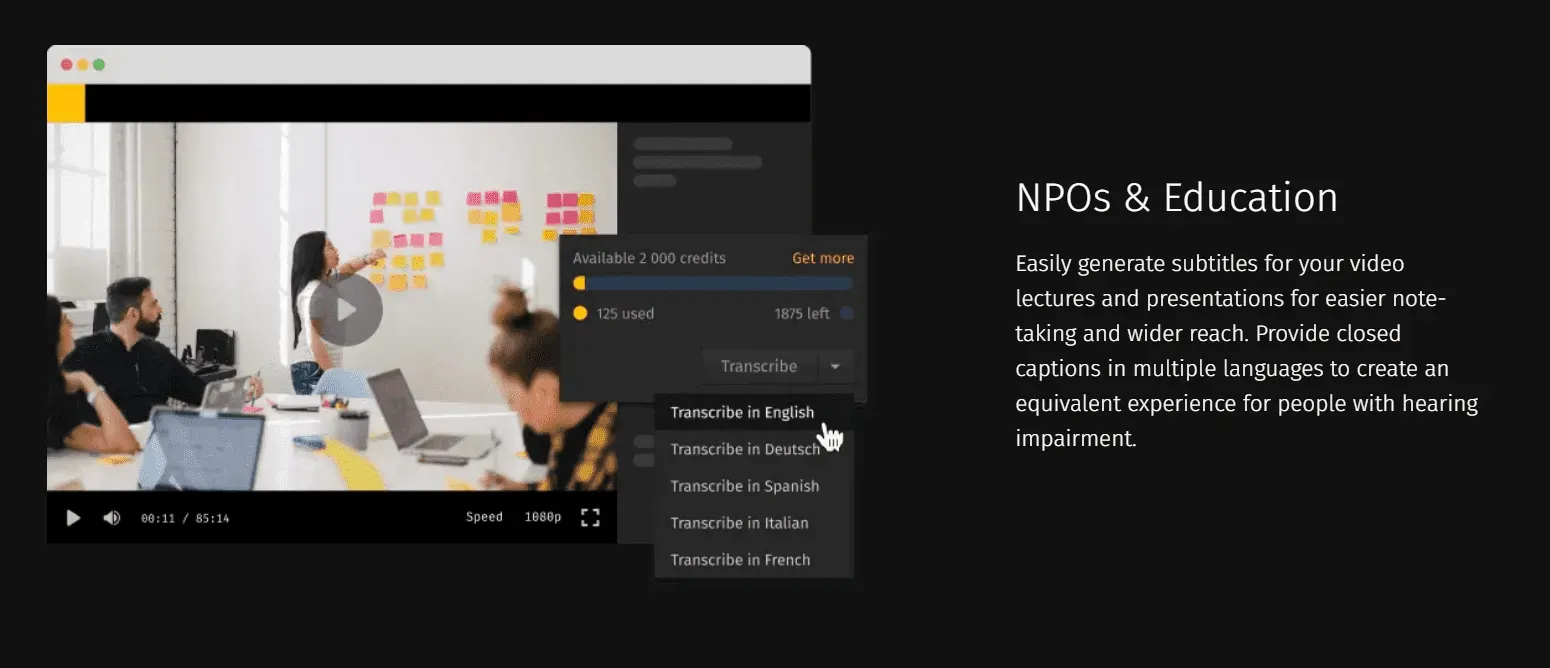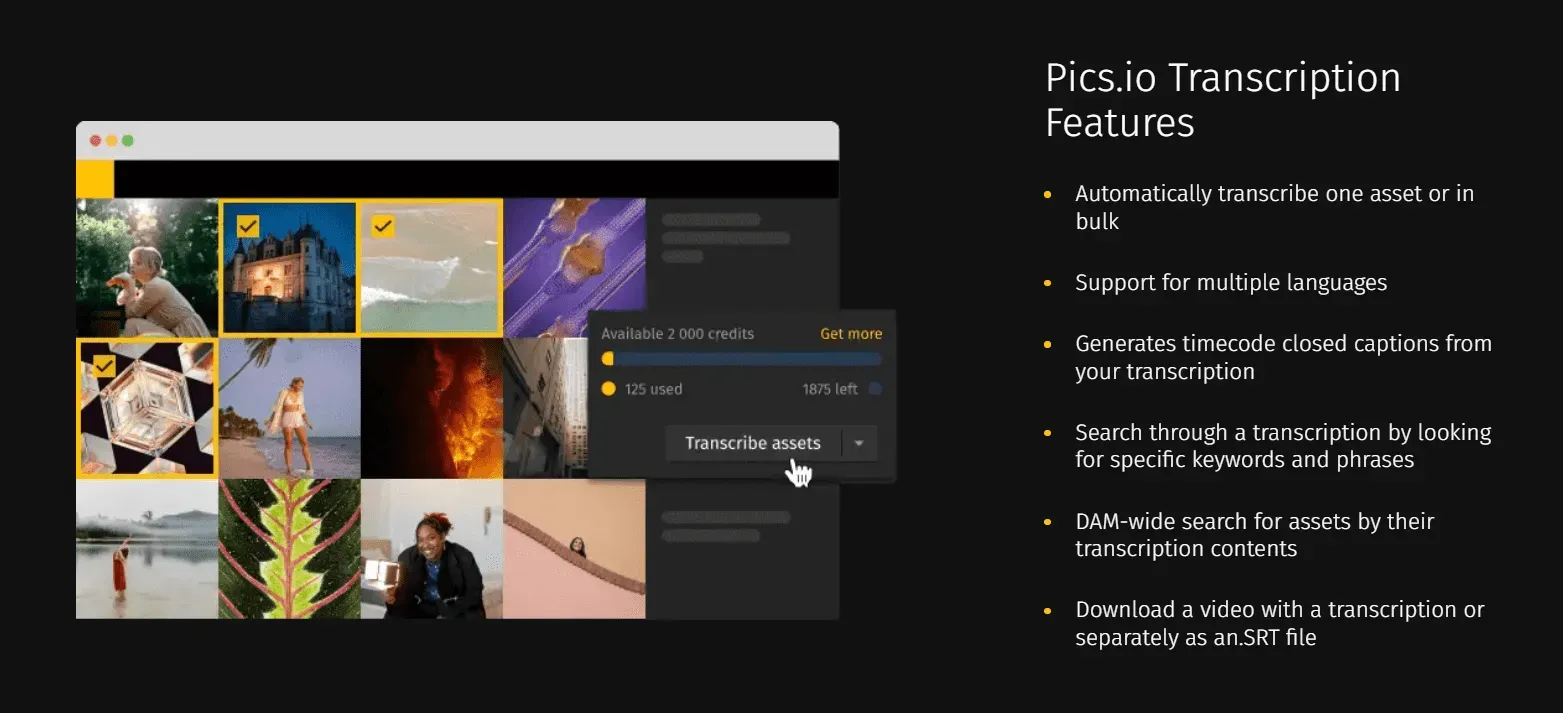In this article, you’ll learn:
Video transcription is the process of converting spoken words into text format. In educational institutions, it plays a crucial role in improving accessibility and ensuring that all students have equal access to educational resources.
In this article, we will explore the significance of video transcription for accessibility in higher education institutions and how the Pics.io Digital Asset Management (DAM) system can help with this.
The Importance of Accessibility in Educational Institutions
In today's world, education lays the foundations for personal and professional growth. However, not all individuals, especially those with disabilities, have equal access to educational resources. As a result, it's critical for universities to prioritize accessibility to ensure that everyone has equal opportunities to learn and grow.
Accessibility in educational institutions refers to creating an environment where individuals with disabilities or impairments can fully participate in academic activities. Accessibility is not just about physical access to buildings and classrooms but also about providing equal access to information, technology, and learning resources.

Video transcription is one way to improve accessibility for people with hearing disabilities, low literacy, and non-native speakers. Video transcription makes video learning materials accessible to a larger audience, including students who have problems with hearing or understanding the language, accent, etc.
Adding captions to the video allows viewers to read along with the dialogue. Additionally, transcripts offer an alternative to audio for those who prefer to read or who have difficulty understanding spoken language.
Video transcription also benefits people with low literacy skills and non-native speakers who may not understand complex vocabulary or accents. Transcripts provide an opportunity for them to read along with the video and better grasp the content.
Overall, video transcription is a simple and effective way to improve accessibility in educational institutions. Equal access to educational resources means that all students, regardless of their disabilities or impairments, have the opportunity to learn and succeed.
Legal Requirements for Accessibility in Education
Ensuring accessibility in education is not just a moral obligation but a legal requirement. Educational institutions must comply with various laws and regulations to provide equal access to education for everyone. Failure to meet these requirements can result in legal consequences, including lawsuits and penalties.
The most significant legal requirements for accessibility in education are the Americans with Disabilities Act (ADA) and the Rehabilitation Act of 1973. Under these laws, universities must offer reasonable accommodations to individuals with disabilities to ensure that they can participate in all aspects of academic life.
Equal educational opportunities are especially important in online learning environments, where video content is commonly used for lecturing. During the past few years, more and more educational institutions all over the world have been shifting to online lectures because of COVID-19 lockdowns.
Many of them have chosen to stick with the online learning process even though the restrictions were removed. Thus, nowadays, millions of people study online and need to have access to high-quality learning materials.
Colleges and universities must prioritize accessibility so that all students can learn and develop. And, video transcription is an effective tool to meet the legal requirements we discussed above.
Benefits of Video Transcription for Educational Institutions
Closed captioning is a type of video transcription when not only the dialogues are transcribed, but also all the other sounds in the video, such as clapping, laughing, door slamming, etc. Using captions in higher education isn’t something new. Such education captions allow students to better understand the context and grasp all the material from a video.

Further, we are explaining the benefits of closed captioning why closed captioning is important:
Improved accessibility for all students
Closed captioning accessibility allows them to follow the lecture or video content by reading the text, particularly in online learning settings where video content is prevalent. This makes educational resources more accessible to everyone, including individuals with hearing disabilities or non-native speakers.
Better understanding and retention of information
Students who have access to closed captions education can better comprehend and retain information. This is because such video transcription provides visual aid to reinforce the audio content, which helps understand and process the information more effectively.
Easier content indexing and searchability
Both instructors and students can easily search and locate specific content within a video or lecture. They can also review specific parts of the lecture or video, which enhances both learning and teaching experience.

Implementing Video Transcription in Educational Institutions
Video transcription is a valuable tool for educational institutions seeking to improve accessibility for their students. With text versions of video content, universities can ensure that students with hearing impairments, language comprehension difficulties, or learning disabilities have access to all the necessary learning materials and information.
Some of the major challenges for closed captioning accessibility in higher education are low budgets and no workflows in place for doing video transcriptions. Fortunately, this is where a Digital Asset Management (DAM) system comes in handy.
Pics.io is a reliable DAM solution with a speech-to-text video transcription feature. Our system can help generate timecodes for closed captions in multiple languages.

With our DAM, educational institutions can easily store and organize video content in a centralized location, making it easier to manage and access. They can streamline the video transcription process so that all video content is transcribed accurately and consistently.
We also offer powerful search and indexing capabilities, which can be used to identify and prioritize videos that require transcription. With this functionality, institutions can quickly identify which videos need transcription and allocate resources accordingly.

In addition, DAM can help institutions track and manage transcription workflows, enabling them to monitor the progress of transcription projects and ensure timely completion. This will be especially useful for universities with large volumes of video content that need transcription.
All in all, digital asset management can significantly improve the efficiency and accuracy of video transcription, as well as closed captioning accessibility in higher education institutions. By setting up transcription workflows with a DAM and enhancing accessibility, universities and colleges can provide a better learning experience for all students.
Conclusion
By prioritizing accessibility and implementing video transcription, educational institutions can support the academic success of all students and comply with legal requirements. It is essential to continue investing in accessibility to create a more inclusive learning environment for everyone wanting to obtain higher education.
Some of the major benefits of closed captioning, a type of video transcription, are improved accessibility for all students, better information retention, and easier searchability through the learning materials. All these advantages can be achieved with a user-friendly DAM system that can help to create closed captions with its speech-to-text recognition feature.
Did you enjoy this article? Give Pics.io a try — or book a demo with us, and we'll be happy to answer any of your questions.




